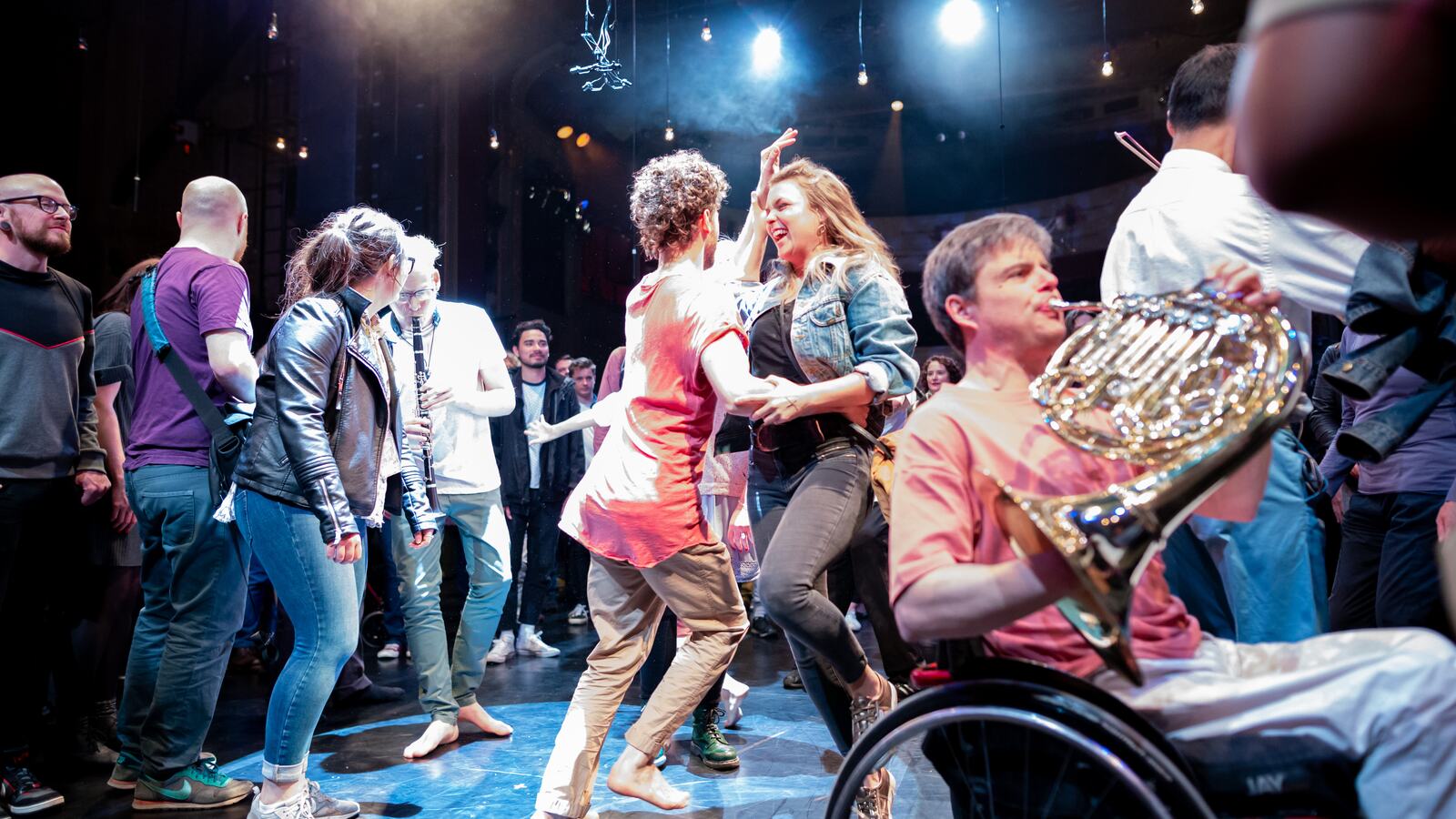The British Paraorchestra describes itself as ‘the world’s only large-scale ensemble for professional disabled musicians’. It works under the artistic direction of conductor Charles Hazlewood, whose mission is ‘to redefine what an orchestra can be… an extraordinary and perfectly synchronised body of instruments that draws on the tradition of centuries but is enriched and expanded by the talents, the instruments and the zeitgeist of the 21st century’.
The Nature of Why takes its inspiration from a monologue by the American physicist, Richard Feynman, in which he describes the complexities entailed in trying to reply to the simple question of why magnets repel each other. This highly engaging and charismatic recorded speech punctuates the performance throughout which, rather than illustrating the physics described, evokes the aura of mystery and wonder contained therein.
The audience is led onto the stage and spends the duration free to wander within a wide circle of musicians, comprised of singers, woodwind, percussion, string section, and electric guitar. The musicianship is excellent. Some of these also move amongst us, notably the operatic singers, and dancers performing in a contact-improvisatory style. Composed by Goldfrapp’s Will Gregory, the piece is comprised of richly layered tidal shifts between movements, with each musician amplified by often cunningly positioned microphones, and the sound delivered by speakers around us.
An array of suspended light bulbs variously flares up and fades above our heads as the dancers weave between us in pastel coloured costumes. The staging means that other spectators often obscure the view, so much of the visual experience involves observing others conspicuously consuming the event, since it is literally impossible to see past them. This perhaps unintentional element of the event might provide a rewarding research experience for cultural anthropologists, noting the costumes and expressions worn by we civilians as we choose how best to watch.
Whilst one section of dancing takes place in the sunken area offstage, the rest of the performance is not sharply differentiated. Rather, the experience is structured by audience choice. It is therefore probably best to set off on a good exploratory journey, to get up close to the singers and dancers wandering amongst us: the electric guitarist veering from surf to grunge, and the percussionists variously bathing us in relaxing tinkles then bursting into expertly frenzied flurries. At last one gets a sense that the end is near as we are encouraged to dance, though (thankfully) not too insistently.
The Feynman monologue gave me a sense of the awesome mysteries explored by the oft-maligned scientific method, and the musical accompaniment, both haunting and celebratory, provided a fitting expression of this never-ending endeavour. As children soon discover, but perhaps we forget in our quest for certainty, it is better to try and enjoy the journey of wondering rather than to hope for a terminal destination.

